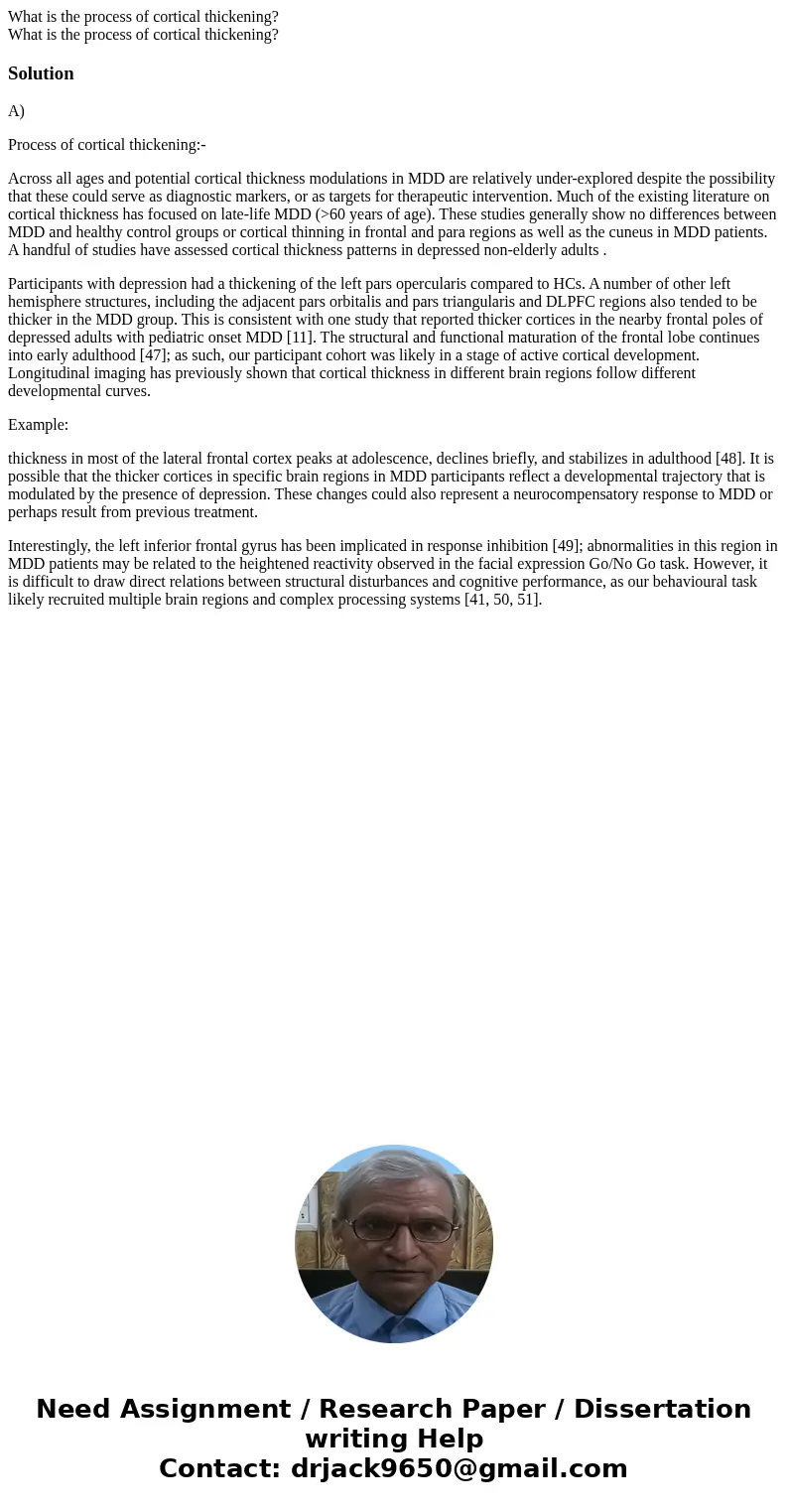What is the process of cortical thickening What is the proce
Solution
A)
Process of cortical thickening:-
Across all ages and potential cortical thickness modulations in MDD are relatively under-explored despite the possibility that these could serve as diagnostic markers, or as targets for therapeutic intervention. Much of the existing literature on cortical thickness has focused on late-life MDD (>60 years of age). These studies generally show no differences between MDD and healthy control groups or cortical thinning in frontal and para regions as well as the cuneus in MDD patients. A handful of studies have assessed cortical thickness patterns in depressed non-elderly adults .
Participants with depression had a thickening of the left pars opercularis compared to HCs. A number of other left hemisphere structures, including the adjacent pars orbitalis and pars triangularis and DLPFC regions also tended to be thicker in the MDD group. This is consistent with one study that reported thicker cortices in the nearby frontal poles of depressed adults with pediatric onset MDD [11]. The structural and functional maturation of the frontal lobe continues into early adulthood [47]; as such, our participant cohort was likely in a stage of active cortical development. Longitudinal imaging has previously shown that cortical thickness in different brain regions follow different developmental curves.
Example:
thickness in most of the lateral frontal cortex peaks at adolescence, declines briefly, and stabilizes in adulthood [48]. It is possible that the thicker cortices in specific brain regions in MDD participants reflect a developmental trajectory that is modulated by the presence of depression. These changes could also represent a neurocompensatory response to MDD or perhaps result from previous treatment.
Interestingly, the left inferior frontal gyrus has been implicated in response inhibition [49]; abnormalities in this region in MDD patients may be related to the heightened reactivity observed in the facial expression Go/No Go task. However, it is difficult to draw direct relations between structural disturbances and cognitive performance, as our behavioural task likely recruited multiple brain regions and complex processing systems [41, 50, 51].

 Homework Sourse
Homework Sourse